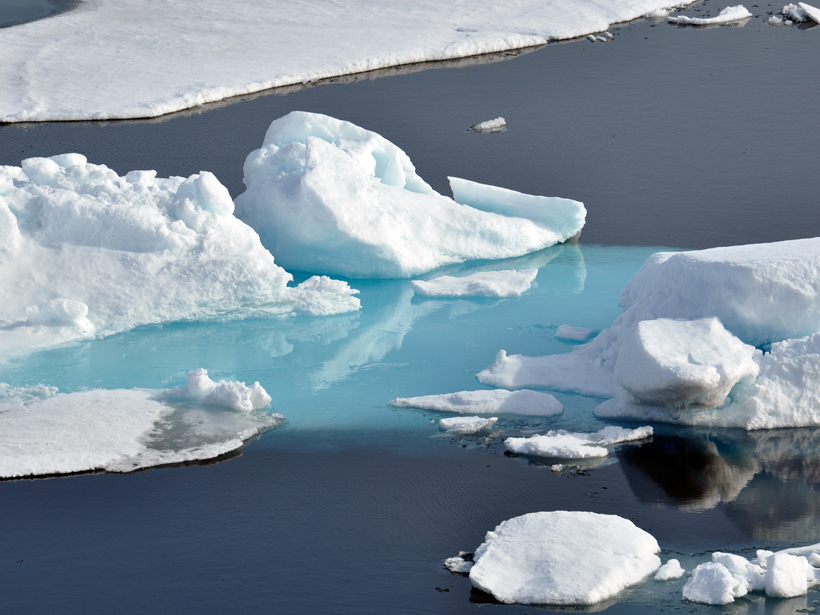Source: Journal of Geophysical Research: Oceans
Arctic sea ice is melting at unprecedented speeds. In the past, researchers watched the ice shrink and expand with the seasons, but since satellite imagery became available in the 1970s, scientists have observed year-round declines in the Arctic Ocean.
Scientists are grappling with the implications of the steady disappearance of sea ice, but the effects are difficult to simulate in global climate models. Ice loss is tied to a range of interdependent processes, including ocean circulation, temperature, weather, and the Earth’s albedo—its ability to reflect solar energy back into space. But to understand these broad consequences of ice loss and how it will impact the global climate, scientists must first pin down the small-scale and high-frequency mechanisms that drive ice loss.
Researchers from the United Kingdom’s National Oceanography Centre focused on the role of tides in order to examine the relationship between sea ice loss and climate variability. Luneva et al. modeled Arctic tidal dynamics over a span of 30 years, with data from 1978 to 2009, and found that the movement of tidal currents accounted for approximately 15% of sea ice loss in the last decade.
The models also pinpoint some of the mechanisms that make tides so influential. Friction—where water meets the seabed and the rough underside of the ice—is the driving force behind vertical mixing that brings the warm, salty waters of the Atlantic Ocean to the surface, where it warms the colder, fresher waters of the Arctic and accelerates melting.
Tides wield a lot of power over salinity and temperature, two traits that are critical to the mechanics of ocean circulation. The authors demonstrated that modeling tidal dynamics can be a boon to climate projections and contribute to a more complete picture of Earth’s climate systems. (Journal of Geophysical Research: Oceans, doi:10.1002/2014JC010310, 2015)
—Lily Strelich, Freelance Writer
Citation: Strelich, L. (2016), Arctic tides drive water mixing and sea ice loss, Eos, 97, doi:10.1029/2016EO043461. Published on 14 January 2016.
Text © 2016. The authors. CC BY-NC 3.0
Except where otherwise noted, images are subject to copyright. Any reuse without express permission from the copyright owner is prohibited.

